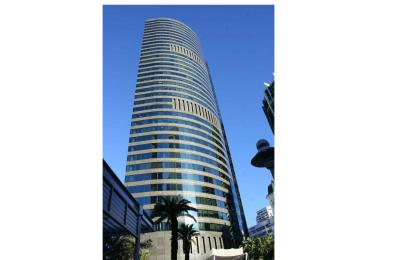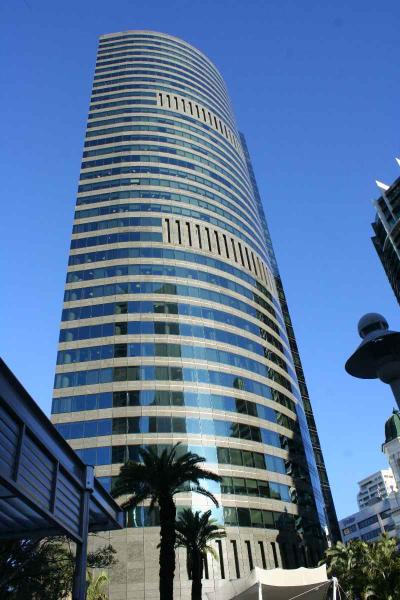
GSA Guide - Waterfront Place Claimed
URPoint Details
This URP is provided and maintained by members of the Geological Society of Australia as a geo-located community knowledge service.
Very elegant landmark office tower with polished green serpentinite cladding and nickel sulphate glass windows on the entire facade.
History:
This is one of the Brisbane's landmark office towers built to accommodate company offices spread over 40 levels. It is 162 m high. The tower and the adjacent Eagle Street Pier complex was designed by architect Cameron Chisholm Nicol.
The building was constructed by F.A. Pidgeon and Son in joint venture with Folkstone Ltd. Obayashi Corporation of Japan was invited to participate on the basis of becoming the Project Head Contractor. The eliptical shape of the building maximises the views to the river and city.
The curved blue glass facade is still a notable feature in the Brisbane skyline. The major features of the lobby are green granitic gneiss floors and walls, water features, high ceilings and polished steel columns. The Waterfront Place complex includes a two level restaurant, entertainment and retail complex known as The Eagle Street Pier. Stones used in this complex emphasise its connection to the tower.
Building Materials:
The building has a reinforced concrete frame clad with double glazed (nickel sulphate) solar-tinted window panels.
The building has an extensive facade clad with greenish porphyritic granitic gneiss in rough and polished finish. Surrounding retaining walls and ornaments are also made of this stone. The commercial name for this stone is 'Verde Maritaka' and is understood to be imported from northern India.
The small green cobble tiles in the paving are artificial stone produced in Japan. The windows in this building had a defect due to an impurity of nickel sulfate in the glass, which causes the glass to expand and shatter when it got hot. In the mid-1990s, more than 300 windows containing the impurity were replaced in the building.
- Type:
- Landmark
















